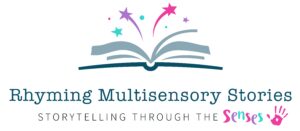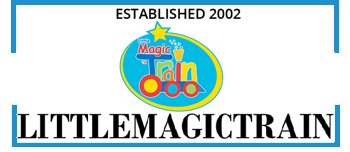All our adventures are multi-sensory and perfect for ALL children. We have extra sensory activities linked to the adventures created by experts in this field. A big thank you to our experts, the amazing Joanna Grace creator of The Sensory Projects, and Victoria Navin creator of Rhyming Multisensory Stories, for all your time and help.
What is sensory engagement?
By Joanna Grace creator of 'The Sensory Projects'.


We all know children are more interested in a hands-on learning experience than a chalk-and-talk one (adults too), sensory engagement aims to take that one step further.
Our primary means of accessing information in the world is our senses, as we begin our cognitive journey we begin with a sensory exploration of our surroundings, that lays the foundation blocks for our understanding. We build upon our sensory understanding of the world to create anticipation, curiosity, and reason.
Teaching in a sensory way is super inclusive as it invites everyone to join in, no matter where they are cognitively. When our senses are involved in learning and participation more of our brain is stimulated, this is what makes it more interesting and makes us more likely to retain that information. Think of the lessons you remember from school, it is likely they were the ones with the Bunsen burners, or where you sang or moved, the ones where your senses are involved.
Sensory engagement promotes cognition and memory, it supports communication and people’s ability and readiness to learn, and it is good for mental health too.
I am a sensory engagement specialist, often times in my work I am trying to draw a distinction between sensory and SENSORY. Because of course everything can be seen, touched, even tasted, arguably all experiences are sensory, but I mean something more than that. I mean SENSORY, not sensory!
To be SENSORY I look for experiences that draw the attention of the senses alone, so an experience that even if you have no understanding will still be interesting to your sensory systems, or experiences that fill a whole sensory system.
Here is an example:
A teacher telling a story about a child finding treasure at the end of the rainbow might hold up a picture of a rainbow to further engage with this story. The child who understands that the story is about a rainbow will look at the picture to find out what the rainbow looks like. It is their understanding, their curiosity, that draws them to that image, not their senses. Indeed their sight may be drawn by another bright object in the room, or by a light source. This is sensory.
If I were to try to tell that same story I might prepare by sourcing some lovely coloured cellophane, as the child in the story steps into the rainbow to pick up the treasure I will invite the child I am sharing the story with to look through sheets of coloured cellophane – that change the colour of EVERYTHING they see – or perhaps I would hold the sheets over the end of a torch and bathe that child in the different colours of light. This is SENSORY.
Often times when people are looking to be inclusive, they start with a relatively complex task and try to strip it back to make it easier for someone who faces more barriers to learning can access it, this can be a depressing process, what you are offering feels like it gets less as you work to make it accessible. But if you start at a sensory level and work up, it is easier, more fun, and more inclusive, and it doesn’t lessen the offer it enriches it for everyone.
Jo Welcomes connections find her on Facebook Linkedin and Twitter
Learn more at The Sensory Projects Online College
What are the benefits of Multisensory Storytelling?
By Victoria Navin creator of 'Rhyming Multisensory Stories'.


Stories create a unique bond between the storyteller and the story explorer enhancing and enriching experiences, and connecting individuals to literacy, culture, history, and topic in a fun and engaging way.
There are many benefits of promoting learning through the senses including:
Building communication skills:
Speech, language, and literacy skills.
Promoting self-confidence and well-being:
Trying out new ideas and skills in a safe setting through exploration, drama, and role play, practicing self-care and independence.
Developing self-awareness:
Asking for ‘help’, ‘again’, and ‘more’, making choices and rejections.
Opportunities to explore cause & effect and build anticipation skills.
Promoting Physical Development:
Fine and gross motor skills.
Building knowledge of the environment and the world around us.
Engagement in scientific experimentation, mathematical concepts, critical thinking, and problem-solving.
Engagement in creative arts and crafts:
Using and handling a variety of tools and materials, expressing creativity, and re-creating a story through a piece of art or dance/movement.
Development of social & emotional skills:
Turn-taking, listening to others’ ideas, sharing, teamwork, relating events to those in our own lives, and enjoying achievement.
Opportunities for the learners to explore and express their likes, dislikes, and sensory preferences in a safe and therapeutic environment.
Learn more at Rhyming Multisensory Stories
What is Sensory Processing?
Vestibular Sensation
The internal vestibular system is the balance sense as it enables you to:
- Move smoothly while walking up and down stairs or riding a bike or scooter.
- Maintain a sense of balance whilst riding in a moving vehicle or rocking back and forth.
- Keeps you upright is while sitting or standing for example sitting upright as you go down a slide.
Put simply, our vestibular sense is our internal sense of balance. More accurately, however, it is a complex ‘system’ for balance that is essential for controlling important aspects of everyday life and our interactions with the world around us, such as posture, alertness, concentration, and stillness, as well as balance (Connell and McCarthy 2014).
Proprioception
Our body processes information from our muscles and joints to enable you to know where you are in space. When our joints and muscles move, they process information that is vital for our coordination, which is called proprioceptive feedback.
The proprioceptive systems enable our bodies to:
Know where our limbs are. A great example is when we take a sip from a cup we don’t have to look at it as it is the proprioceptors which send the information to our brain where our hand is.
It enables us to grade the force and speed of movement. Thinking back to the cup it stops us from slamming it in our face. This sense makes sure our hand moves smoothly and slowly enough to reach our mouth.
Proprioceptive sensors also help us maintain our balance and posture. If you close your eyes and stand on one foot you will feel movement in the ankle and that is the proprioceptors helping your vestibular senses make sure you don’t fall over.
Touch Sense
The touch receptors in our skin send sensory information to our brains. It is best described by Hancock (1996) as the receptors “sending off to the brain a picture that is exactly like the object itself”.
Individual sensitivity to tactile sensations can be altered by damage (disease and infection) to the sensory neurons or pathways.
Did you know: At the age of 10, most people have about 50 touch receptors per square millimetre of skin, but by the age of 50 this has declined to about 25, and only about 10 per square millimetre by the age of 70 (Hancock, 1996).
Thermoception
Thermoception refers to temperature sensation on the skin via the transient receptor potential (TRP) channels
The TRP channels sense the temperature of the air and the “contacting object is sensed relative to skin temperature, which is typically maintained around 32°C” Prescott & Ratte 2017.
TRP channels are also activated by specific chemicals in food products like chilli and mint to give you that burning and cooling sensation.


